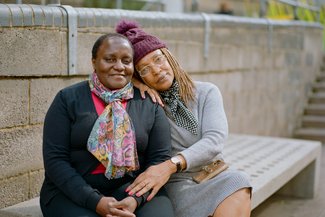
Cost of Living Crisis: Impact on Services
As the cost-of-living crisis worsens, its effects continue to take a toll on the most vulnerable groups within society. We explore the impact on the services supporting them.

2 Dec 2022
By Nia Clark, Senior Research and Engagement Officer
As winter swiftly approaches, the worsening cost-of-living crisis is demonstrating the ways in which inequality still defines modern Britain.
Women with multiple unmet needs are struggling more than ever, too often overlooked and unaccounted for. Yet, if we know that this crisis is gendered, why is there not more targeted and gender-specific support available?
The distinct effect of the ongoing economic crisis on women at-risk is well-documented. Yet, too often, the stories and everyday realities of those with real experience are not centred within public discourse. Agenda Alliance has spoken with women experiencing multiple unmet needs to explore the impact of the cost-of-living crisis upon them.
Katy*, a young mother from Gateshead, told me that she is “constantly terrified” of not having enough money. Often, she is frightened about turning on the heating or using the oven to cook her daughter a hot meal, continuously walking a tightrope between her child’s needs and financial hardship. Ninety per cent of all single parents are women and single-parent families are at a particularly high risk of poverty when compared to their counterparts. Katy believes that the extent of the crisis is “hidden from people who have more money [and] they just don’t realise what’s going on.”
This dire situation is also impacting Katy’s mental health and self-esteem. She told me that,
“I just wonder why I can’t provide for my kid in the same ways others can... It all impacts a lot on how you feel about yourself as a mam. When I see others able to do more, I just feel like a failure.”
The burden of feeling “like a failure” should never fall upon individuals. Rather, the failure to curb rising poverty rates and support the most vulnerable is the product of an overburdened and under resourced welfare system, and government failure to take account of the specific ways in which poverty is gendered.
Further, it is alarming that the cost-of-living crisis is preventing women from leaving abusers. In 95% of cases, domestic abuse includes economic abuse.
Speaking with Nici*, a woman with experience of undergoing economic abuse and coercive control, she said,
“People always tell you just to leave but it’s never that simple. My former partner would control all our finances. I was working but all my salary went into his bank account. He told me he was paying our bills, but he never did, so we just slipped further and further into debt.”
In combination with other obstacles to fleeing an abusive relationship, the economic realities today have worsened existing barriers and made it much harder for women to leave.
Women at-risk are often ignored or silenced within political dialogue about the economic crisis but Nici told me that this must change. In addition, she is concerned that many women are unaware that they are experiencing financial and coercive control and said,
“It took me 12 years to realise what was happening to me. There needs to be more awareness about what domestic abuse and violence is and more signposting of where support can be found.”
In the current climate, it is more important than ever to open the discussion up to explore the many ways that women and girls experiencing multiple unmet needs are particularly vulnerable. In short, we need a more targeted government approach that listens to the voices of women and girls and recognises the distinct ways in which their lives are affected.
*These names have been changed to protect the privacy of the women interviewed.

As the cost-of-living crisis worsens, its effects continue to take a toll on the most vulnerable groups within society. We explore the impact on the services supporting them.

The cost of living crisis will affect us all, but women and girls with unmet need will be disproportionately impacted. This first installment in our cost of living series looks at the policy context of the crisis.